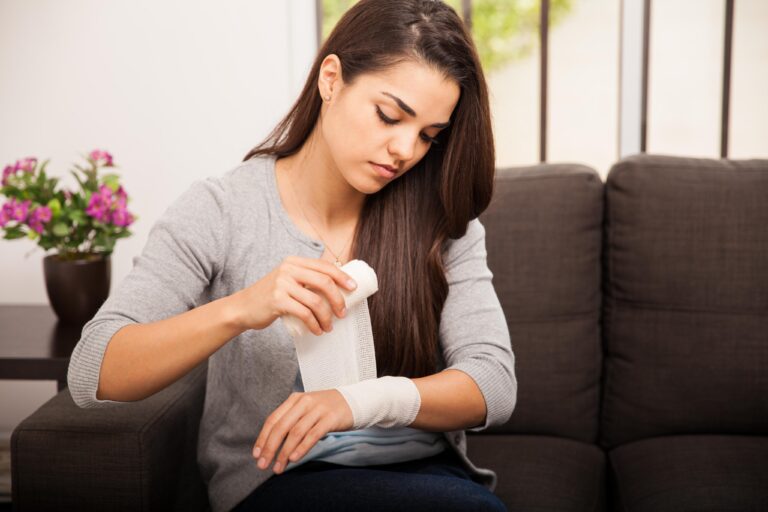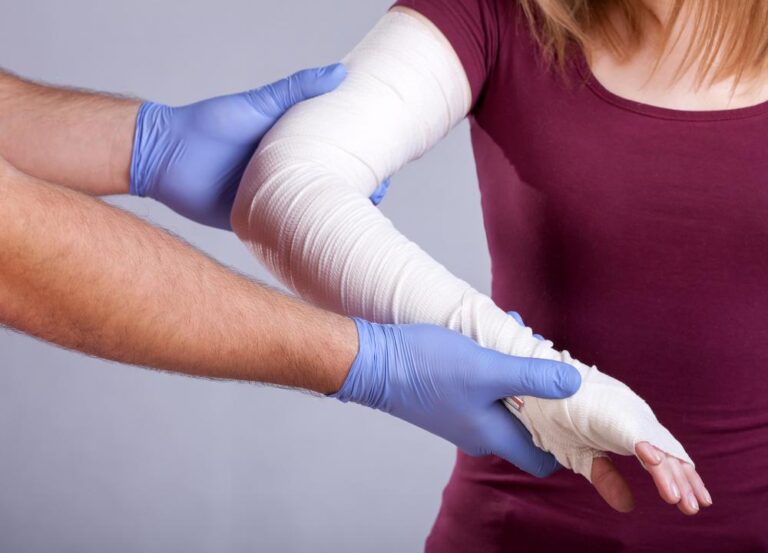A burn is when tissue is damaged, usually after exposure to heat.
Burns are categorized into three types:
First-degree burns (superficial burns) are the least severe of all burns. They induce discomfort and reddening of the epidermis (the skin’s outer layer).
Second-degree burns (partial thickness burns) impact the epidermis and dermis (the skin’s lowest layer). They induce inflammation, discomfort, redness, swelling, and blistering.
Third-degree burns (full thickness burns) Burns of the third degree (full thickness) penetrate the dermis and impact deeper structures. They result in burnt, whitened, or blackened skin that may be numb.
COMPLICATIONS OF BURNS
Major burns must be treated as soon as possible since they can create significant health problems, such as:
- Sepsis (a kind of illness that occurs when germs enter the bloodstream)
- Tetanus (a disease caused by bacteria that enters your body through an open wound)
- Hypovolemia (a potentially dangerous loss of body fluids such as blood)
- Hypothermia (a critically low body temperature)
- Breathing problems due to smoke or heat
- Bone and joint problems caused by the effects of scar tissue on the skin, muscles, or tendons

PREVENTION OF BURNS
- Always pay close attention to everything on your stovetop and turn the handles of pots and pans back to avoid accidentally hitting them.
- Do not carry babies or toddlers while cooking. Also, keep away from electrical appliances that can get hot. Cover the electrical outlet with a cap.
- Have a fire extinguisher on each floor of your home and make sure your smoke and carbon monoxide alarm batteries are working.
- Do not smoke in bed.
- Set the maximum temperature of hot water in your home to 120 degrees or less, and be sure to check the water temperature before giving your child a bath.
- Check the temperature of buckles and belts before putting your child in the car. Especially when your car is parked in the sunlight.
- Be careful with chemicals and wear safety glasses when using them. When not in use, keep out of reach of children or out of the house, ideally in a safe, child-proof place.
- Do not place electrical products near the water. When not in use, unplug the power cord and keep it in a safe place out of the reach of children.

CONTROLLING BURN PAIN
Burn pain can be severe and last for a while. Because of its distinct traits, shifting patterns, and numerous components, it is challenging to control.
Treatment for burns also involves pain since the wounds need to be cleaned and the bandages replaced. Studies have shown that severe burns require extensive pain management.
Burns occur unintentionally. The most vulnerable groups are kids and senior citizens. Treatment is necessary for all serious burns in order to avoid infection and scarring. The most extreme sort of burns, third-degree burns can be fatal. Burns of the first and second degrees are more painful. Immediate medical assistance can help the healing process. If you or a loved one experience an accidental burn visit Specialty Care Clinics for quality urgent care.
